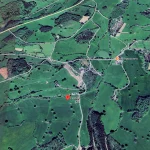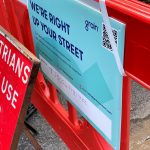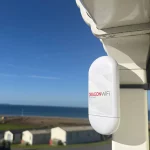BT Details Plan for UK’s First Converged Digital Network by 2022
Last week BT talked about their aim to have a “single integrated all-IP fibre network” that enabled seamless converged access across fixed, WiFi and mobile services. Today BT’s consumer division, which includes ISP Plusnet and mobile giant EE, has explained more about how this will all work.
Crucially the new ‘Best Connected‘ plan is not a simplistic bundling of services, it’s much more radical than that and will play to the strengths of both BT’s fixed line ADSL, FTTC, FTTP network and EE’s mobile (4G / 5G) infrastructure in order to provide “seamless connectivity” via a smart converged network by 2022 (supported by hybrid technology to dynamically combine both sides).
In keeping with this BT will launch two new products so that customers “never again have to think or worry about which network they’re connected to” (assuming you’ve ever felt a need to “worry” about such things – we haven’t) – the BT Plus service and the Keep Connected Promise.
Advertisement
New Product Summary
* BT is launching BT Plus, bringing together home broadband, mobile and Wi-Fi capabilities into one converged plan, with one simple bill. BT Plus customers will benefit from the fastest speeds from BT on broadband and mobile. BT’s Keep Connected Promise means that if ever there is a fault with a customer’s home broadband, BT enables unlimited data on their BT mobile plans and will send a 4G Wi-Fi Mini Hub with unlimited data so the customer can stay connected while their broadband is repaired or installed.
* EE is launching new converged ultrafast home broadband plans over broadband (FTTP, G.fast) and 4G, which include 4GEE Backup and Home Move, keeping customers connected if there are issues with their connection or when they’re moving house. EE broadband customers also enjoy data boosts on their EE mobile plan, with up to 20GB of mobile data that they can gift to family members on the same account.
* EE is also showcasing a prototype for a new category of converged broadband – EE Hybrid Broadband technology. The UK’s first truly hybrid home broadband combines a superfast broadband network with a 4G network to give customers consistent and reliably fast broadband speeds, even in areas with traditionally slow broadband speeds or at peak times. The hybrid technology ensures customers are always connected, as one technology will take over the other in the unlikely event of a fault.
* EE is becoming the first UK network to support all major Smart Home ecosystems with new, strategic partnerships with Hive and Nest plus a wide range of smart cameras, thermostats, sensors and lighting – providing options for customers whether they prefer Hive, Google, Apple Homekit, or Alexa smart home ecosystems. EE’s new Smart Home range will be available online, in select EE stores and over the phone from 1st June 2018.
* EE is launching the UK’s first mobile plans that allow families to gift their data to anyone on their account. Families can turn their data into digital pocket money, monitor and control their children’s usage online, and stop them ever running out of data without having to spend an extra penny, all with a few taps through the My EE app. The My EE app also allows parents and carers to monitor and control how much their children are online and what they’re accessing with easy-to-use content filters.
* EE is also launching new ‘Flex’ mobile plans – perfect for those who want the control and flexibility of pay as you go with the simplicity of pay monthly plans. Flex customers can increase or decrease their allowance or even take a month’s break, and receive mobile data boosts every three months of consecutive payments.
The BT Consumer division has also announced a number of other improvements, such as a new self-service app from Plusnet, an aim to answer 100% of BT customer calls in the UK & Ireland by the end of 2020, the addition of BT products to EE’s expanding footprint of more than 620 retail stores and a commitment to increase mobile customers’ Time on 4G to 99% by 2020.
Meanwhile EE will seek to be the first UK network to offer a superfast same-day smartphone delivery and expert set-up service, which will launch in London first, and they’ll boost their customer support via augmented reality (AR) customer service tools, EE Remote Support and EE Virtual Support.
On top of that BT TV will include the Amazon Video (Prime) app in addition to Netflix and customers will also be able to access NOW TV (Sky) from 2019.
Marc Allera, CEO of BT Consumer, said:
“BT runs the UK’s most advanced mobile and broadband networks, but our customers demand better connections, and the best service no matter where they are. We’re investing across BT, EE and Plusnet so that we can provide our customers with the widest choice of products and services, on the best networks, and with the best service in the UK.
We’re beginning our journey to create one converged, smart network built on our world-leading fixed and mobile networks – going beyond 4G, 5G, Wi-Fi and ultrafast broadband to seamlessly connect our customers wherever they are to the things that matter most to them.”
The big question is whether or not consumers actually want all this, particularly as the BT Plus service seems set to be positioned as a premium offering and prices are expected to start at around £80 per month (expensive but then we are talking about throwing seamless mobile and ultrafast broadband connectivity into the same bag).
Advertisement
Personally we like to keep our fixed line and mobile services as separate and thus flexible (switching) as possible but others may have a different preference. However it would currently be very difficult for BT’s rivals to match what they’re aiming to do with seamless indoor and outdoor connectivity (limitations with MVNO arrangements and fixed line access etc.).
Another interesting question is over how such close convergence might eventually impact the existing branding, particularly with respect to EE as it may become harder in the future to distinguish between them and BT. Meanwhile Plusnet will no doubt retain their position as a low cost niche.
We will also be interested to see how a “bonded” 4G and fixed line broadband network (Hybrid Broadband Technology) will work in practice, not least with respect to potentially improving overall data speeds for those on slower lines (i.e. it uses the capacity of the fixed network first, then tops up the speed via 4G) but also in terms of managing usage allowances (fixed lines tend to be unlimited while mobile is usually capped) or tackling port forwarding flexibility when playing online video games.
At the time of writing it’s already been suggested that if your fixed line went down then the 4G would take over and adopt an “unlimited” data allowance, which could create a big strain on capacity during major fixed line outages in busy areas (we’ve asked if any limits would be applied to performance etc).
Advertisement
Apparently this new hybrid solution will be supported by BT and EE’s Hybrid Access Gateway, which harnesses multi-path TCP (Transmission Control Protocol) technology as part of their Smart Network vision. The operator aims to offer a single box and a two box solution – the two box solution is effectively to enable existing broadband customers to ‘upgrade’ while keeping the same broadband equipment and contract.
Expect products in 2019.
Mark is a professional technology writer, IT consultant and computer engineer from Dorset (England), he also founded ISPreview in 1999 and enjoys analysing the latest telecoms and broadband developments. Find me on X (Twitter), Mastodon, Facebook, BlueSky, Threads.net and Linkedin.
« SSE Enterprise Telecoms and Sky Business Sign UK Ethernet Deal
Welsh Government Update on BT Rollout of Superfast Broadband »

















































Comments are closed